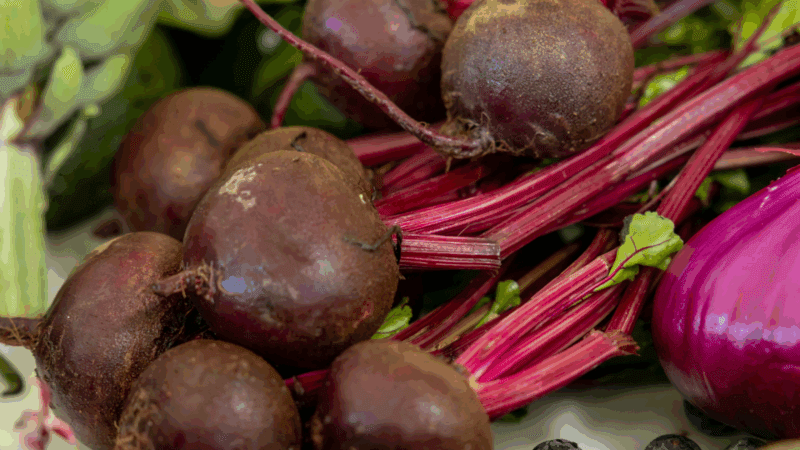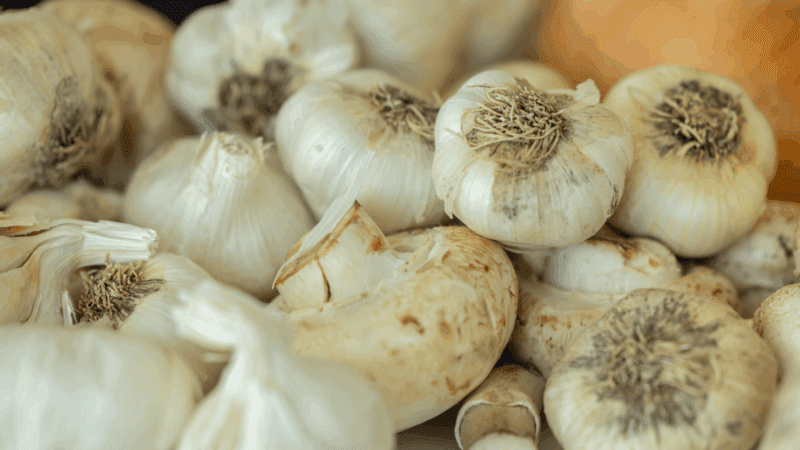Key Takeaways
- Whole, plant-based foods—like sprouts, leafy greens, berries, and probiotic-rich options—deliver vital nutrients, antioxidants, and pre/probiotics that support gut-brain health and overall vitality.
- “Culinary Alchemy®” emphasizes micro-nutrient-dense choices (e.g., broccoli sprouts, turmeric, omega-3s) to reduce inflammation, enhance mental clarity, and aid disease prevention.
- Simple practices—growing your own sprouts, mindful eating, and choosing colorful, unprocessed foods—transform meals into healing medicine for long-term wellness.
12 healing foods to power–and empower–your long-term health
I often talk about how eating the rainbow, or incorporating fruits and veggies into your daily diet, is key to living a long, wonderful life. We know from folk remedies and ancient wisdom that certain foods really do have disease-fighting components. Clients often ask me about the science behind why these are so supportive, and there is plenty of back up. I also like how this intersects nicely with Culinary Alchemy®, my method for eating to nourish your physical body and energy centers (chakras), promoting optimal flow and circulation. Because everything is connected, naturally.
Plants that Heal
Long before modern medicine, ancient healing methods like Ayurveda, Traditional Chinese Medicine, and Indigenous practices understood what we now have proven through science: that plants carry powerful, bioactive compounds that support the body’s innate ability to heal.
Today, we have identified phytonutrients, antioxidants, flavonoids, polyphenols, essential oils, and trace minerals as molecules that help fight inflammation, repair cellular damage, balance hormones, and support detoxification and immune function. Many of these compounds are found in everyday foods. I’m a strong believer in showing how we can easily accommodate healthy practices into our everyday lives.
So let’s explore my favorite fruits, vegetables, herbs, nuts, seeds, and healthy fats, all deeply rooted in traditional healing and modern nutrition. Each plant is paired with its disease-fighting benefits and research-backed components, plus with its energetic properties, which are the subtle, profound way these foods interact with our emotional and spiritual wellbeing.

1. Blueberries
These vibrant berries are a sweet treat and, fresh or frozen, are one of the most concentrated sources of antioxidants you’ll find. Toss them in yogurt, blend into smoothies, or eat them by the handful.
- Targets: Cognitive aging, oxidative stress, inflammation
- Key compounds: Anthocyanins, flavonoids, resveratrol
- Science: Multiple studies show regular blueberry consumption improves mood and memory, delays cognitive decline, and reduces markers of oxidative stress (1) (2).
- Energetic Note: Blueberries vibe with the throat and third eye chakras—encouraging clear thinking, truth-telling, and vision.
2. Beets
These earthy root vegetables are blood-builders and circulation enhancers. Rich in nitrates and antioxidants, beets support cardio health, brain oxygenation, and liver detox.
- Targets: High blood pressure, liver detoxification, athletic performance, nitric oxide production
- Key compounds: Betalains, nitrates, folate, betaine
- Science: Beets lower systolic blood pressure, improve vascular function, and protect the liver against oxidative stress.
- Energetic Note: Beets ground you through the root chakra, revitalizing your life force and helping you feel stable, supported, and connected to the Earth.

3. Avocado
Another delicious superfood, avocados are great for your heart, plus they help the body absorb fat-soluble vitamins (A, D, E, K). Their buttery texture makes them easy to eat daily, from avocado toast to a salad add-in to green smoothies.
- Targets: Cholesterol, inflammation, skin health
- Key compounds: Oleic acid, glutathione, lutein, fiber
- Science: Clinical data shows that daily avocado intake can reduce LDL and small dense LDL particles while improving antioxidant capacity.
- Energetic Note: Avocados can help soothe the heart chakra, restoring emotional calm, self-love, and compassion.
4. Garlic
Garlic has been used for centuries to combat infections and more. We now know that garlic’s sulfur compounds can reduce cholesterol, blood pressure, and inhibit cancer cell growth.
- Targets: High cholesterol, hypertension, infections, cancer prevention
- Key compounds: Allicin, sulfur compounds, selenium
- Science: Garlic reduces total and LDL cholesterol, lowers blood pressure (6), and exhibits antimicrobial and anticancer properties (7).
- Energetic Note: Garlic can clear energetic stagnation. It activates the solar plexus and crown chakras, burning off sluggishness, and raising your internal vibration.

5. Rosemary
This fragrant and sharp herb is also a cognitive superfood. Its volatile oils support memory, mental clarity, and detoxification.
- Targets: Cognitive function, circulation, liver detox, immune support
- Key compounds: Carnosic acid, rosmarinic acid, essential oils (cineole)
- Science: Rosemary has been shown to protect brain cells from oxidative damage (8), improve alertness, and act as a mild antimicrobial (9).
- Energetic Note: Rosemary strengthens the third eye and heart chakras, enhancing clarity, intuition, and confidence.
6. Turmeric
Turmeric has been used in Ayurveda and Traditional Chinese Medicine for centuries to purify the blood and support digestion. It is best absorbed with black pepper (piperine) and healthy fats.
- Targets: Inflammation, arthritis, cancer prevention, brain aging
- Key compound: Curcumin
- Science: Curcumin has been shown to effectively reduce inflammation and support joint health, and it shows promise in reducing tumorigenesis, or the initial formation of tumors in the body.
- Energetic Note: Turmeric supports the solar plexus and root chakras, helping us process emotions, feel grounded, and take action.

7. Quinoa (technically a seed, not a grain)
Quinoa is a seed, but since we cook with it and due to its nutrient profile, it’s classified as a “pseudo grain.” It’s one of the only plant foods that’s a complete protein, making it ideal for plant-based diets.
- Targets: Blood sugar regulation, digestion, nutrient density
- Key compounds: Complete amino acids, magnesium, fiber, B vitamins
- Science: Supports metabolic balance, provides steady energy, and nourishes gut health with fiber (12).
- Energetic Note: Quinoa supports the solar plexus, fueling self-confidence, and aiding digestion and life energy
- Healthiest grain alternatives: Teff, amaranth, buckwheat, and millet are excellent for blood sugar control and micronutrient content.
8. Walnuts
Walnuts are a tasty salad topper and they are good for your brain! High in plant-based omega-3s and polyphenols, walnuts fight inflammation and oxidative stress. Buy in small batches, store in the fridge or freezer, and always choose raw and unshelled when possible to prevent them from becoming rancid.
- Targets: Brain health, cardiovascular protection
- Key compounds: ALA, ellagitannins, melatonin, vitamin E
- Science: Walnuts have been shown to improve memory, slow cognitive aging, and support cardiovascular health (13).
- Energetic Note: Walnuts stimulate the crown and third eye chakras, awakening higher consciousness and intuition.
9. Brazil Nuts
Just one or two Brazil nuts a day deliver your full daily requirement of selenium—a mineral crucial for thyroid function, fertility, and antioxidant defense.
- Targets: Thyroid support, immune health, cancer prevention
- Key compound: Selenium
- Science: Selenium supports the conversion of T4 to T3 (thyroid hormones), boosts glutathione, and protects DNA from oxidative damage (14).
- Caution: Too many can cause selenium toxicity. Stick to 1–2 daily.
- Energetic Note: Brazil nuts resonate with the throat chakra and root, supporting clear expression, hormonal balance, and grounding.
10. Raw Sunflower Seeds
Raw sunflower seeds are one of the most affordable, nutrient-dense foods, rich in vitamin E, selenium, and healthy fats. They are great for trail mixes, salads, or blending into seed butters.
- Targets: Inflammation, cholesterol, immunity
- Key compounds: Vitamin E, phytosterols, selenium, magnesium
- Science: Raw sunflower seeds reduce systemic inflammation, improve lipid profiles, and support antioxidant function (15).
- Energetic Note: Sunflower seeds radiate solar plexus energy, boosting confidence, energy metabolism, and positive mood.
11. Raw Pumpkin Seeds (Pepitas)
Pumpkin seeds can be an excellent support for balancing hormones. Rich in zinc and magnesium, they can help balance everything from mood and sleep to reproductive health and immunity.
- Targets: Hormonal health, blood pressure, anxiety, prostate health
- Key compounds: Zinc, magnesium, tryptophan, omega-6 fats (balanced with omega-3s)
- Science: Raw pumpkin seeds aid neurotransmitter production (serotonin/melatonin), regulate blood pressure, and reduce prostate inflammation (16).
- Energetic Note: Pumpkin seeds empower the sacral chakra, enhancing creativity, sexual energy, and grounded emotional flow.
12. Healthy Oils (Olive, Flaxseed, Avocado, Coconut in moderation)
Not all oils are created equal. For example, cold-pressed, organic oils deliver anti-inflammatory fatty acids that nourish cell membranes, brain tissue, and the nervous system. So make sure you use the best quality (that fits your budget) for the highest health impact.
- Targets: Cardiovascular health, inflammation, hormone balance
- Key compounds: Monounsaturated fats (olive, avocado), ALA (flax), MCTs (coconut)
- Science: Olive oil is associated with reduced all-cause mortality and cardiovascular disease (17). Flaxseed oil improves lipid profiles and reduces CRP (a marker of inflammation) (18).
- Energetic Note: Healthy oils lubricate your energetic system, especially the sacral and crown chakras—supporting creativity and divine connection.
Putting It All Together: A Functional Guide
This is a quick way to see which foods correlate to major health conditions. This is by no means a comprehensive list, nor should it be used as a treatment plan. Always consult a healthcare provider before eating any superfoods, especially if you’ve been diagnosed with a serious illness.

What to Eat, How Often
Should these be eaten daily? These plants are safe for most people to eat frequently, even daily, when consumed in moderation and variety. Here are two basic rules of thumb:
Eat daily:
Blueberries, avocado, quinoa, garlic, healthy oils (in moderation), pumpkin seeds, sunflower seeds, turmeric (with breaks), rosemary (fresh or tea), almonds, walnuts
Consume weekly or with care:
Beets (if you are oxalate-sensitive), Brazil nuts (limit to 1–2/day)
And if you are wondering how to get them all in…
Here are some food pairing notes and some important things to keep in mind:
- Turmeric + black pepper + fat = Best absorption of curcumin
- Beets + citrus or vinegar = Helps iron and folate absorption. Also, oxalates and calcium compete for absorption, so allow time between consumption.
- Quinoa + vitamin C-rich foods = Boosts iron absorption from plant-based sources
- Garlic + olive oil = Cardioprotective synergy
- Nuts/seeds + fruit = Balanced blood sugar and energy
- Avoid: High-fat + high-fiber overload in one meal if digestion is sluggish
- Avocado, nuts, seeds = Best absorbed with other healthy fats but don’t overconsume.
This is where ancient wisdom meets functional medicine. And these foods are so important to us all. They have been for a very long time. Whether you’re looking to support your brain, heart, hormones, immune system, or digestion, or simply want to nourish yourself more intentionally, these plants are a foundation for sustainable, daily healing.
Remember, each day is an opportunity to support and heal yourself from the inside out, aligning your energy at the same time!
Xo – Serena
FAQs: Healing Foods, Energy and Everyday Use
Q1: Can eating too many “healing” foods backfire?
A: Yes—even healing foods have limits. For example, eating too many Brazil nuts can lead to selenium toxicity. Excess raw cruciferous vegetables (like kale or broccoli) may affect thyroid function in those with iodine deficiency. Overuse of turmeric supplements can cause digestive upset or interact with medications. Balance and rotation are key, and listening to your body’s energetic response is just as important as the science.
Q2: Are there food combinations that amplify or block healing benefits?
A: Absolutely. Some combos enhance absorption—like turmeric + black pepper + healthy fat for curcumin, or quinoa + vitamin C-rich foods for better iron uptake. Others can block nutrient availability. For instance, eating high-calcium foods with iron-rich meals can reduce iron absorption. On an energetic level, pairing grounding foods (like beets) with uplifting foods (like citrus) can balance your system for mental clarity and calm.
Q3: What’s the best way to start incorporating these foods without overhauling my entire diet?
A: Start with one healing food a day, consistently. Add blueberries to your morning, a spoonful of ground flax to a smoothie, garlic to soups, or sunflower seeds to salads. Energetically, even a small shift in intention and nourishment can recalibrate your body’s frequency. Over time, this becomes a ritual—not a chore.
Q4: Are there certain healing foods better eaten raw vs. cooked?
A: Yes. For example:
- Garlic is most potent raw (due to allicin), but letting chopped garlic sit for 10 minutes before cooking helps preserve its benefits.
- Beets retain more antioxidants raw but are easier to digest cooked.
- Turmeric needs heat and fat for optimal absorption.
Energetically, raw foods are more activating, while cooked foods are more grounding—so choose based on what your body and energy field need.
Q5: How can I tell if a plant food is working for me energetically or physically?
A: Tune in:
- Physically: You might notice improved digestion, steadier energy, clearer skin, or less joint pain.
- Energetically: You may feel lighter, more focused, grounded, or emotionally at ease after eating certain foods.
Keep a simple journal or voice memo tracking how you feel after meals. Energy healing is subtle—but cumulative.
Q6: What’s the most overlooked healing food on the list?
A: Sunflower and pumpkin seeds. These nutrient-dense, shelf-stable seeds are rich in zinc, magnesium, selenium, and plant-based protein. They support hormone balance, immune resilience, and nervous system function. Energetically, they anchor vitality in the lower chakras, helping with stability, reproductive health, and creative flow. They’re easy to sprinkle on anything and deeply underrated.
Q7: What’s the difference between eating for healing and eating for longevity?
A: Healing focuses on targeted nourishment—foods that reduce symptoms, repair damage, or correct imbalance. Longevity is more holistic—it’s about sustainable vitality, metabolic resilience, and aging well over time. Many healing foods—like turmeric, blueberries, and nuts—do both. The key is consistency, diversity, and a mindful approach that includes energetic nourishment, not just physical nutrition.
Q8: How do seasonal or moon cycles affect how we should eat these foods?
A: Seasonal eating honors the body’s shifting needs:
- Spring: Light, cleansing foods—greens, beets, sprouts
- Summer: Hydrating, antioxidant-rich—berries, herbs, seeds
- Autumn: Grounding, warming—turmeric, garlic, nuts
- Winter: Nourishing, immune-supportive—roots, oils, seeds
Energetically, syncing with moon cycles (e.g., detoxifying during waning moons, building nourishment during waxing moons) aligns your food ritual with nature’s rhythm.
Citations:
- Travica N, D’Cunha NM, Naumovski N, Kent K, Mellor DD, Firth J, Georgousopoulou EN, Dean OM, Loughman A, Jacka F, Marx W. The effect of blueberry interventions on cognitive performance and mood: A systematic review of randomized controlled trials. Brain Behav Immun. 2020 Mar;85:96-105. doi: 10.1016/j.bbi.2019.04.001. Epub 2019 Apr 15. PMID: 30999017.
- Krikorian R, Shidler MD, Nash TA, Kalt W, Vinqvist-Tymchuk MR, Shukitt-Hale B, Joseph JA. Blueberry supplementation improves memory in older adults. J Agric Food Chem. 2010 Apr 14;58(7):3996-4000. doi: 10.1021/jf9029332. PMID: 20047325; PMCID: PMC2850944.
- Mirmiran P, Houshialsadat Z, Gaeini Z, Bahadoran Z, Azizi F. Functional properties of beetroot (Beta vulgaris) in management of cardio-metabolic diseases. Nutr Metab (Lond). 2020 Jan 7;17:3. doi: 10.1186/s12986-019-0421-0. PMID: 31921325; PMCID: PMC6947971.
- Jones T, Dunn EL, Macdonald JH, Kubis HP, McMahon N, Sandoo A. The Effects of Beetroot Juice on Blood Pressure, Microvascular Function and Large-Vessel Endothelial Function: A Randomized, Double-Blind, Placebo-Controlled Pilot Study in Healthy Older Adults. Nutrients. 2019 Aug 2;11(8):1792. doi: 10.3390/nu11081792. PMID: 31382524; PMCID: PMC6722817.
- Wang L, Tao L, Hao L, Stanley TH, Huang KH, Lambert JD, Kris-Etherton PM. A Moderate-Fat Diet with One Avocado per Day Increases Plasma Antioxidants and Decreases the Oxidation of Small, Dense LDL in Adults with Overweight and Obesity: A Randomized Controlled Trial. J Nutr. 2020 Feb 1;150(2):276-284. doi: 10.1093/jn/nxz231. PMID: 31616932; PMCID: PMC7373821.
- Sun YE, Wang W, Qin J. Anti-hyperlipidemia of garlic by reducing the level of total cholesterol and low-density lipoprotein: A meta-analysis. Medicine (Baltimore). 2018 May;97(18):e0255. doi: 10.1097/MD.0000000000010255. PMID: 29718835; PMCID: PMC6392629.
- Shang A, Cao SY, Xu XY, Gan RY, Tang GY, Corke H, Mavumengwana V, Li HB. Bioactive Compounds and Biological Functions of Garlic (Allium sativum L.). Foods. 2019 Jul 5;8(7):246. doi: 10.3390/foods8070246. PMID: 31284512; PMCID: PMC6678835.
- Abdelrazik E, Hassan HM, Hamza E, Ezz Elregal FM, Elnagdy MH, Abdulhai EA. Beneficial role of rosemary extract on oxidative stress-mediated neuronal apoptosis in rotenone-induced attention deficit hyperactivity disease in juvenile rat model. Acta Biomed. 2023 Jun 14;94(3):e2023104. doi: 10.23750/abm.v94i3.14260. PMID: 37326266; PMCID: PMC10308472.
- Nieto G, Ros G, Castillo J. Antioxidant and Antimicrobial Properties of Rosemary (Rosmarinus officinalis, L.): A Review. Medicines (Basel). 2018 Sep 4;5(3):98. doi: 10.3390/medicines5030098. PMID: 30181448; PMCID: PMC6165352.
- Peng Y, Ao M, Dong B, Jiang Y, Yu L, Chen Z, Hu C, Xu R. Anti-Inflammatory Effects of Curcumin in the Inflammatory Diseases: Status, Limitations and Countermeasures. Drug Des Devel Ther. 2021 Nov 2;15:4503-4525. doi: 10.2147/DDDT.S327378. PMID: 34754179; PMCID: PMC8572027.
- Cozmin M, Lungu II, Gutu C, Stefanache A, Duceac LD, Șoltuzu BD, Damir D, Calin G, Bogdan Goroftei ER, Grierosu C, Boev M. Turmeric: from spice to cure. A review of the anti-cancer, radioprotective and anti-inflammatory effects of turmeric sourced compounds. Front Nutr. 2024 May 28;11:1399888. doi: 10.3389/fnut.2024.1399888. PMID: 38863589; PMCID: PMC11165187.
- Graf BL, Rojas-Silva P, Rojo LE, Delatorre-Herrera J, Baldeón ME, Raskin I. Innovations in Health Value and Functional Food Development of Quinoa (Chenopodium quinoa Willd.). Compr Rev Food Sci Food Saf. 2015 Jul;14(4):431-445. doi: 10.1111/1541-4337.12135. Epub 2015 Apr 10. PMID: 27453695; PMCID: PMC4957693.
- Chauhan A, Chauhan V. Beneficial Effects of Walnuts on Cognition and Brain Health. Nutrients. 2020 Feb 20;12(2):550. doi: 10.3390/nu12020550. PMID: 32093220; PMCID: PMC7071526.
- Köhrle J. Selenium and the control of thyroid hormone metabolism. Thyroid. 2005 Aug;15(8):841-53. doi: 10.1089/thy.2005.15.841. PMID: 16131327.
- Guo S, Ge Y, Na Jom K. A review of phytochemistry, metabolite changes, and medicinal uses of the common sunflower seed and sprouts (Helianthus annuus L.). Chem Cent J. 2017 Sep 29;11(1):95. doi: 10.1186/s13065-017-0328-7. PMID: 29086881; PMCID: PMC5622016.
- Batool M, Ranjha MMAN, Roobab U, Manzoor MF, Farooq U, Nadeem HR, Nadeem M, Kanwal R, AbdElgawad H, Al Jaouni SK, Selim S, Ibrahim SA. Nutritional Value, Phytochemical Potential, and Therapeutic Benefits of Pumpkin (Cucurbita sp.). Plants (Basel). 2022 May 24;11(11):1394. doi: 10.3390/plants11111394. PMID: 35684166; PMCID: PMC9182978.
- Xia M, Zhong Y, Peng Y, Qian C. Olive oil consumption and risk of cardiovascular disease and all-cause mortality: A meta-analysis of prospective cohort studies. Front Nutr. 2022 Oct 18;9:1041203. doi: 10.3389/fnut.2022.1041203. PMID: 36330142; PMCID: PMC9623257.
- Tabrizi R, Azizi Z, Bazmi S, Keshavarzian O, Akbari M, Karimimoghadam Z, Haghpanah A. The impact of flaxseed oil on lipid profiles, weight loss, and inflammatory markers in hemodialysis patients: A systematic review and meta-analysis of randomized controlled trials. Ther Apher Dial. 2024 Aug;28(4):534-546. doi: 10.1111/1744-9987.14140. Epub 2024 May 10. PMID: 38726572.
by





